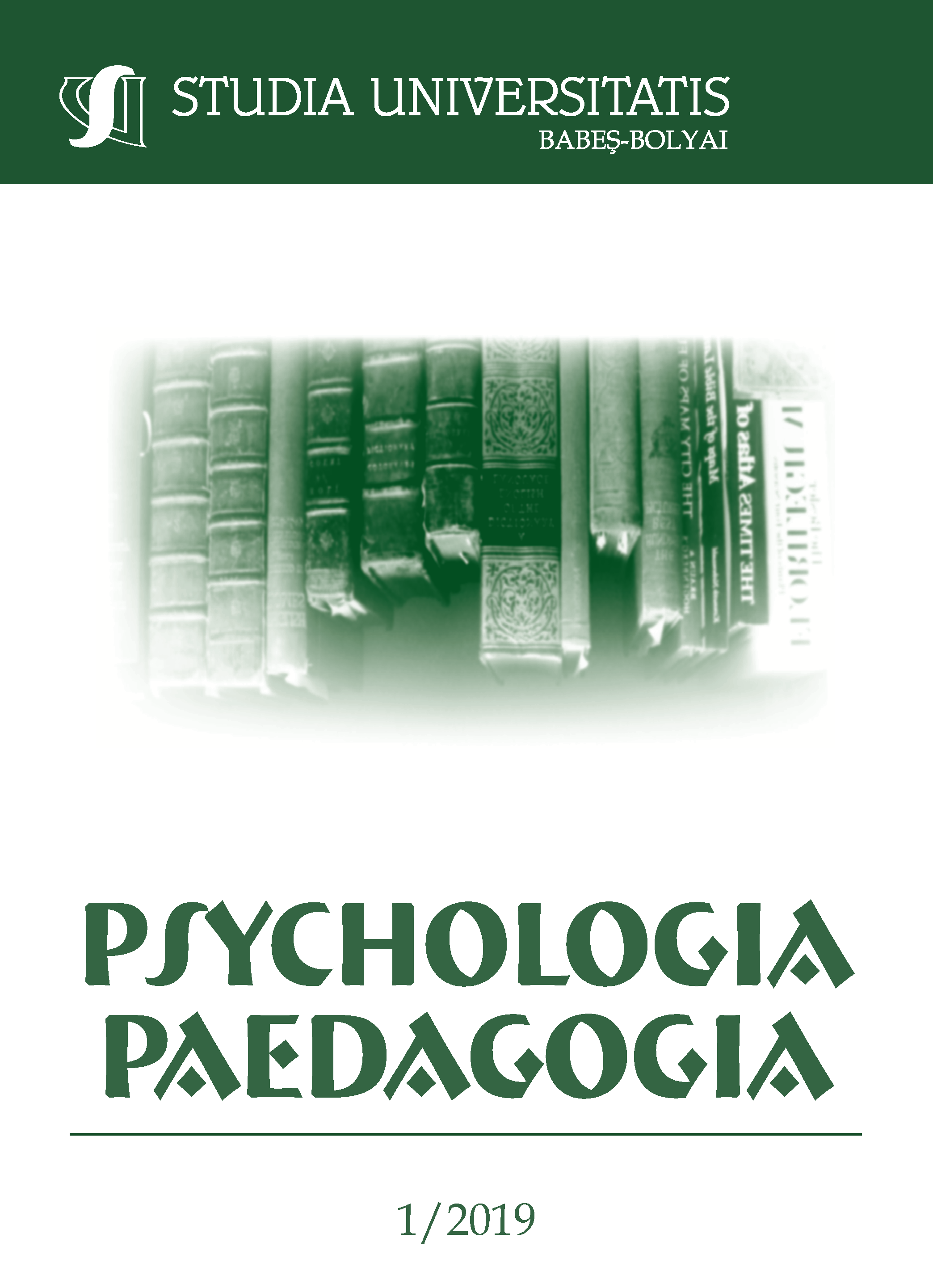INTEGRATING ART THERAPY IN SCHOOLS: A SYSTEMATIC LITERATURE REVIEW
DOI:
https://doi.org/10.24193/subbpsyped.2019.1.03Keywords:
rt therapy, adolescents, children, school children, learning disabilities, emotional and behavioural problems.Abstract
Art therapy is a method of treatment that involves the mental world of human beings. The purpose of this therapy is to improve the patient's emotional and physical functioning and condition. Art therapy is utilized for emotional and mental problems and as a diagnostic tool. This therapeutic technique is currently common in a wide variety of settings in varied therapeutic and rehabilitative settings such as: educational settings, hospitals and mental health centres. With regard to interventions implemented within schools, the significance and comprehension of art therapy is lacking. The purpose of this study is to identify the variety of interventions that exist in the literature on integration of art therapy in schools. Furthermore, this article will present the methods of evaluation, the results, as well as factors that influence the existence of this intervention. The results of the systematic review might be useful for continuing and expanding the integration of art therapy within schools.References
Amir, D., & Or, A. (Eds.) (2005). Another language art therapies - Therapeutic stories. Modan Publishing House Ltd. [Hebrew]
Angold, A., Costello, E.J., Pickles, A., & Winder, F. (1987). The development of a questionnaire for use in epidemiological studies of depression in children and adolescents. London: Medical Research Council Child Psychiatry Unit.
Case, C., & Dalley, T. (2014). The handbook of art therapy. New-York & London: Routledge.
Cooper, H.M. (1998). Synthesizing research: A guide for literature reviews (Vol. 2). Sage.
Cortina, M.A., & Fazel, M. (2015). The art room: An evaluation of a targeted school-based group intervention for students with emotional and behavioural difficulties. The Arts in Psychotherapy, 42, 35-40.
Freilich, R., & Shechtman, Z. (2010). The contribution of art therapy to the social, emotional, and academic adjustment of children with learning disabilities. The Arts in Psychotherapy, 37(2), 97-105.
Greenwald, N. (2012). Therapeutic approaches within educational frameworks. Psychoactualiya – Quarterly of the Israel Psychologists' Association, 26-38. [Hebrew] http://www.psychology.org.il/sites/psycho/UserContent/files/psycho-actualia/psycho4_12.pdf
Isis, P.D., Bush, J., Siegel, C.A., & Ventura, Y. (2010). Empowering students through creativity: Art therapy in Miami-Dade county public schools. Art Therapy, 27(2), 56-61.
Laffier, J. (2016). Empowering bullying victims through artistic expression (L'autonomisation des victimes d'intimidation par l'expression artistique). Canadian Art Therapy Association Journal, 29(1), 12-20.
Law of Special Education (1988). Book of laws, 1256. 114. [Hebrew]
Levick, M.F. (2009). The Levick emotional and cognitive art therapy assessment: A normative study. Bloomington, IN: AuthorHouse.
Malchiodi, C. (2011). Handbook of art therapy. New York, NY: Guilford Press.
Malchiodi, C.A. (Ed.). (2012). Art therapy and health care. New York & London: Guilford Press.
McNiff, S. (1992). Art as medicine: Creating a therapy of the imagination. Boston: Shambhala Publications.
Ministry of Education (2016). Guidelines for the work of educational personnel in the healthcare professions and of art therapists in the educational system. Pedagogical Administration, Division A, Special Education. http://cms.education.gov.il/NR/rdonlyres/0945FB48-542C-49DD-A6CE- D2816B4DD80D/207449/resource_1625648987.pdf [Hebrew]
Moriya, D. (2000). Art therapy in schools. Ramat Hasharon: Turbo. [Hebrew]
Nelson, C.L. (2010). Meeting the needs of urban students: Creative arts therapy in Jersey City public schools. Art Therapy, 27(2), 62-68.
Nissimov-Nahum, E. (2013). Colours of soul and mind: Art therapy for children who behave aggressively. Tel Aviv: Mofet Institute. [Hebrew]
Ofer-Yarom, M. (2014). Co-therapy by an educator and a therapist: Group art-therapy at special education school - From field work to a theoretic model. (Ph.D. Thesis). Ramat-Gan, Israel: School of Education, Bar-Ilan University.
Ottarsdottir, U. (2010). Art therapy in education for children with specific learning difficulties who have experienced stress and/or trauma. In V. Karkou (Ed.), Arts and therapies in schools (pp. 145-160). Jessica Kingsley.
Pinchover, E. (1988). Art therapy for hospitalized children (inspired by Elizabeth Kuebler-Ross’s approach). Harefua, 135(7-8). [Hebrew]
Rubin, J.A. (1984). The art of art therapy. New York, NY: Brunner/Mazel.
Rubin, J.A. (Ed.) (2016). Approaches to art therapy: Theory and technique. New-York and London: Routledge.
Safran, D. (2002). Art therapy and AD/HD: Diagnostic and therapeutic approaches. London: Jessica Kingsley Publishers.
SDQ Publications (2014, 17 February). Articles: Selected SDQ publications. http://www.sdqinfo.com/py/sdqinfo/f0.py
Snir, S., & Regev, D. (Eds.) (2018). When the creative arts therapies and Israeli educational system meet: Features and applications. Haifa: The Emili Sagol Creative Arts Therapies Research Center, Haifa University. [Hebrew]
Tortora, S. (2010). From the dance studio to the classroom - Translating the clinical dance movement psychotherapy experience into a school context. In V. Karkou (Ed.), Arts and therapies in schools (pp. 27-42). Jessica Kingsley.
Uman, L.S. (2011). Systematic reviews and meta-analyses. Journal of the Canadian Academy of Child and Adolescent Psychiatry, 20(1), 57-59.
Zimmerman, M.A. (1995). Psychological empowerment: Issues and illustrations. American Journal of Community Psychology, 23(5), 581–599.
Downloads
Published
How to Cite
Issue
Section
License
Copyright (c) 2019 Studia Universitatis Babeș-Bolyai Psychologia-Paedagogia

This work is licensed under a Creative Commons Attribution-NonCommercial-NoDerivatives 4.0 International License.





